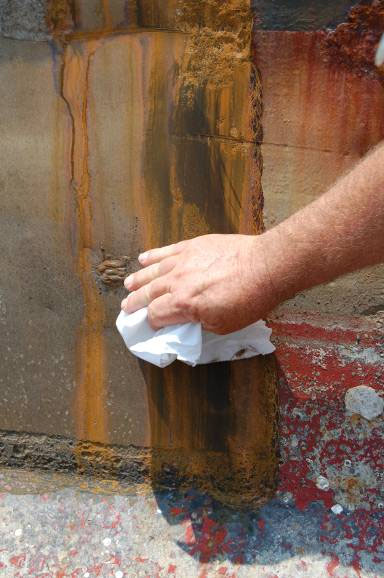On many highway overpasses, bridge painting is an inconvenience to the travelling public as well as a safety hazard.
Therefore, a concept called “Rapid DeploymentSM” has been developed to reduce these inconveniences and hazards.
The main objective of the concept is to mobilize all equipment to the site, blast and paint, and incrementally demobilize all equipment from the site; all in one over-night working shift.
A timeline, which depicts one night’s work and inspection points (one mobilization), is shown in Figure 4 in Appendix A. The contractor began the night’s work by setting up traffic control devices followed by the mobilization of the work platform, an ARK® Overpass Master, towed by a large box truck that housed the paint equipment.
After the final coat was applied, the crew began to remove the containment and touchup any areas that were damaged during the containment removal.
1. To perform the work under time constraints, the contractor must be well equipped, have skilled workers, and have a strong knowledge of what it takes to perform the necessary Rapid DeploymentSM work schedule.
4. Since all coats are applied in one shift and containment is not removed until after the last coat has been applied, there is little chance for surface contamination between coats.
5. Rapid DeploymentSM with one blasting/painting crew (two blasters, one foreman, one helper) is most cost effective on overpasses with paintable area under ~25,000 ft2 when compared to conventional operations.
8. The long term performance of the two coat system with a cure accelerant versus traditional three coat systems without accelerant is as yet unknown.
[Download not found]











April 5, 2009
Main Library